Gray walls have been hot in recent decor, with grey topping "best of" lists all through 2020. But walls are easy to paint over when you want a new look. Floors, on the other hand, should be timeless and classic - who wants to change flooring every few years when a new hot look takes over? So what color floor work alongside gray walls? We've researched design trends to provide several flooring options for you.
Gray comes in many shades and tones, which means it can pair nicely with a wide variety of flooring colors. Some great ideas for new flooring to go with gray walls include:
- Wood
- Blue
- Black
- White
- Beige
- Marble
- Patterned Tiles
Stick around for examples of each look and tips on how to include them in your decor. Learn more about decorating and styling with gray. Plus, check out some hints for picking the right floors for your home.
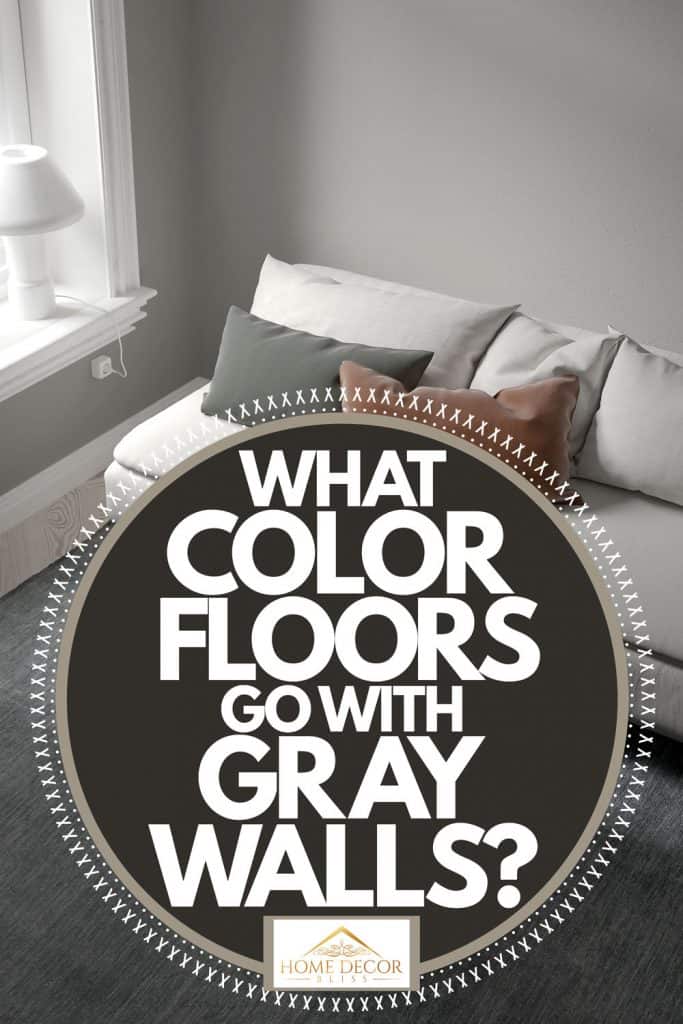
How To Pick Floors
You may already know without a doubt what kind of flooring you're looking for. Carpet, hardwood, vinyl plank, tile, and more - there's a lot of options! If you aren't sure what the best flooring is for you, be sure to consider the room's function along with your personal preferences.
For example, carpet obviously is less desirable in a room where it's hard to clean, like the kitchen. On the other hand, vinyl tile might seem too cold for a bedroom. It's worth noting, however, that the trend of homeowners eliminating carpet from the bedroom continues (read more here: "Should You Use Laminate or Carpet in a Bedroom? [Detailed Pros & Cons Analysis]").
Specifically, when considering floors for gray walls, you'll want to identify the tone of gray. Warm grays with brown undertones go best with gray wood, blue, or beige floors. Cool grays with blue undertones pair well with warm patterns and woods.
Wood Floors In Any Hue
Not every shade of gray is going to be ideal for every kind of wood floor. But because gray is such a versatile color and wood floors are available in so many different styles, you can find several wood floor styles that will work for you, no matter what shade of gray you have.
Light Wood Floors
Here, bleached wood helps to brighten and lighten up the room. With such dark gray walls, light flooring makes a sensible choice. Anything else might be overbearing and dim.

We may include affiliate links and curated AI content to highlight top design styles.
Blonde wood and white trim create a clean, crisp look. This helps reflect light as well, making the whole room look bright and balanced.
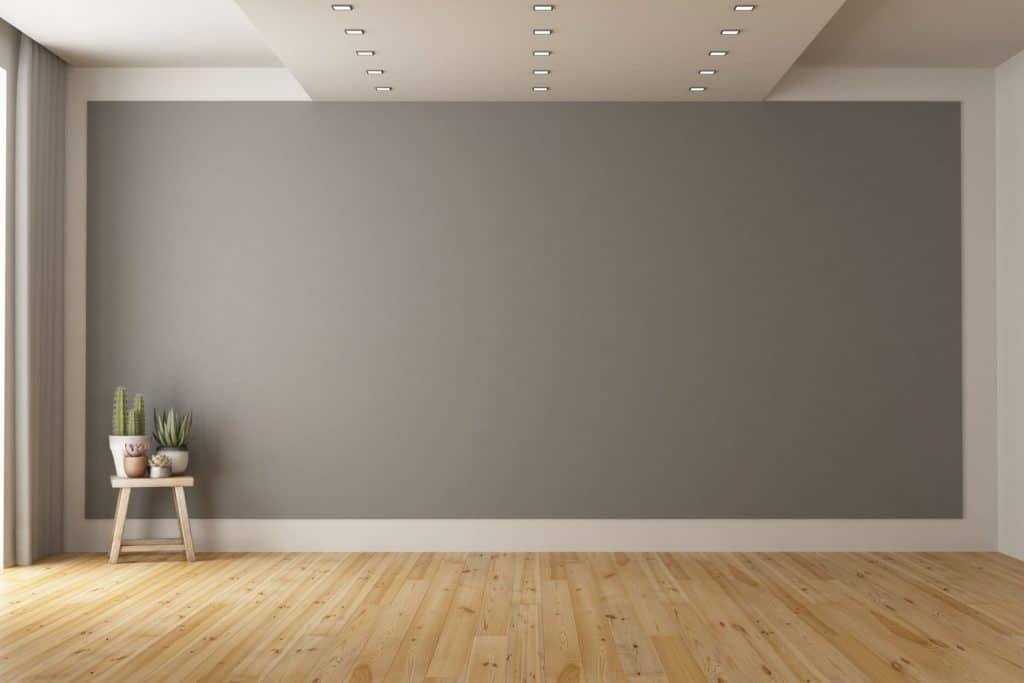
Medium Wood
The rich color of this wood floor helps keep the room from seeming cold and sterile. Plus, using mixed tones helps add some depth and character.
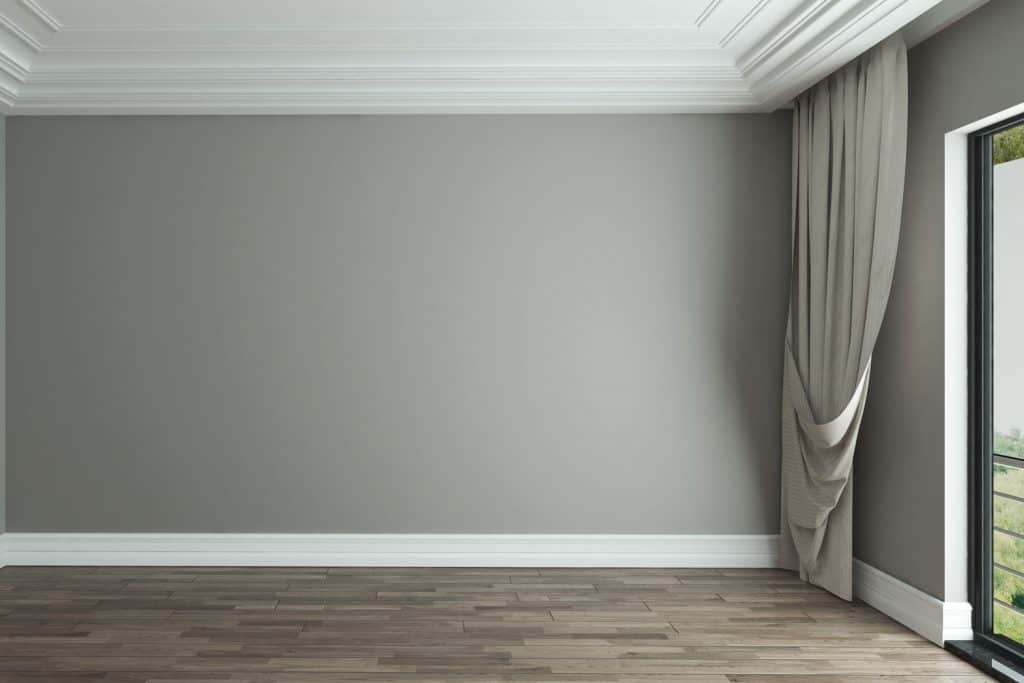
Dark Wood
Dark wood flooring is best used with lighter shades of gray - it's just too easy to overwhelm the room with dark colors otherwise. No one wants to end up in a dark, dreary room, which will turn your gray walls from stylish to bland.
Click here to see this flooring on Amazon.
Gray Wood
Gray walls even go with gray flooring, though you'll want to be sure to add some color elsewhere in the room. Without some accent colors, the overall depth of the room ends up lacking and uniformly boring.
Click here to see this flooring on Amazon.
Blue Floors
Here, gray is paired nicely with blue. Blue and gray have a classic, elegant but simple look when put together.
Click here to see these carpet squares on Amazon.
Black Floors
Gray can also go with other neutral colors, like black. If dark floors and dark walls are too much together, you can always lighten the look a little. Try breaking it up by not using wall-to-wall carpeting. By changing flooring throughout, you can add some variety to the room.
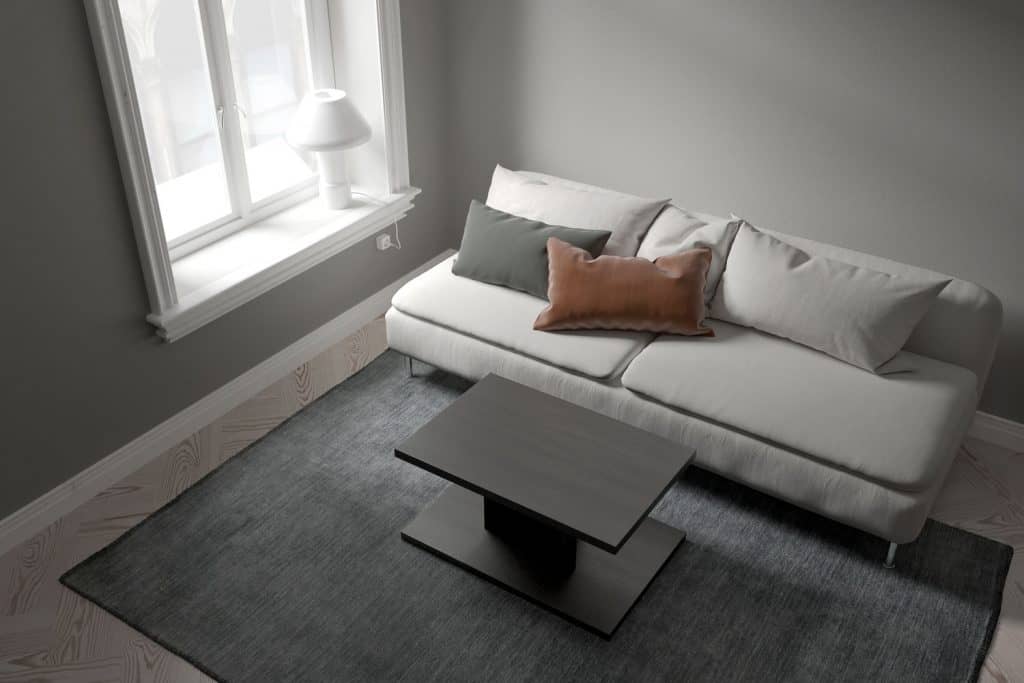
White Floors
If black floors are excessive or smothering, try the opposite look with white. Also neutral but able to reflect natural light, white is an excellent choice for smaller or poorly lit spaces.
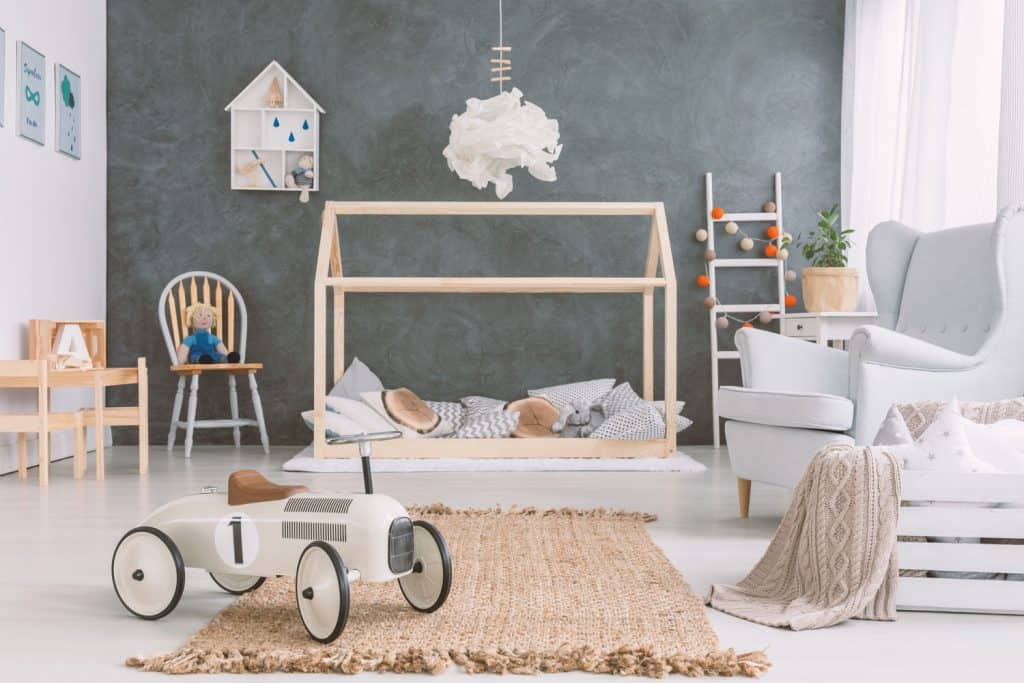
Beige Floors
Gray and beige make a good team. Beige tends to be a cool-toned neutral, which plays well against a warm gray.

Marble Floors
Since hints of gray already feature in most marble, it lends itself naturally to the look of a room with gray walls. There's automatically a certain feeling of same-ness. Just be careful that the whole thing is balanced and not too similar.
Click here to see this marble tile on Amazon.
Vinyl Tiles With Gray Patterns
The easiest way to match patterned vinyl tiles with your walls is to simply make sure that the wall color is also part of the tile's color scheme. Some great options for gray that may work within your palette are shown below.
Gray & Blue
This one w0rks with neutral colors, a great choice for someone who likes patterns but doesn't want anything too bold or excessive.
Click here to see this tile on Amazon.
Gray & Yellow
The yellow in this tile adds a little fun and warmth, perfect for a cool shade of gray (particularly one with hints of blue).
Click here to see this tile on Amazon.
Gray & Teal
This tile is fun and bold, appropriate for someone who doesn't want their gray walls to equal a boring room. Because of the strong blue-green colors, this one may be best with a gray with brown undertones. Next to a blue-gray wall, it will make the wall appear more blue than gray.
Click here to see this tile on Amazon.
Should Flooring Be Lighter Or Darker Than Walls?
There are reasons in favor of floors being both lighter or darker than the walls. Some positives for lighter floors include:
- The room typically appears bigger.
- Light colors reflect more light, making the room brighter.
Reasons to use dark colors include:
- In a room that is already large, dark floors create a more cozy, welcoming vibe.
- Dark floors tend to hide traffic and dirt.
In either case, the most important consideration is color variety. For this reason, pick flooring that contrasts your walls, or at least is a few shades apart. If everything is too close in color, the similarity makes the room boring without any visual interest.
Read more here: "Should Carpet Be Lighter Or Darker Than Walls?"
Does Light Colored Flooring Make A Room Look Bigger?
Making a room look bigger actually depends on the room. If the room has ceilings that are tall enough, dark floors are actually ideal for making the room appear bigger. The dark floor draws the eye inward. Then, with light-colored walls and tall drapes, you can effectively create the illusion that there is a lot more space between the floor and ceiling than there actually is.
However, in a room with low ceilings, dark floors may just make everything look cramped. In addition, rooms with poor lighting will also appear cluttered and dense. In this case, light-colored floors are the optimal choice.
Should Baseboards Match Wall Or Floor?
Baseboards should match the crown molding. They don't necessarily have to match in color - other ways to coordinate the baseboards to the crown molding include matching the size and the style.
Whether your crown molding, baseboards, and other trim match the wall or floor is a matter of personal preference. Some people prefer to keep all of the trim the same color. In this case, matching the floor's color may look good for the baseboard but may not be as sensible for the crown molding. People who want all of the trim to match may instead pick a color that contrasts the floor or wall (or both) for heightened visual interest.
Similarly, others do not like the contrast. In this case, they prefer the trim to blend. If this is your desire, then simply evaluate the style and size of the baseboards. Will they blend better if they match the floor or (in the case of high baseboards) the wall?
In any case, the baseboards don't have to match the floor (or the wall) if you don't like how it looks. Picking a look that blends and coordinates or a style that contrasts to draw the eye are acceptable solutions.
In Conclusion
Gray is a color that comes in a variety of shades and tones. Because gray is such a diverse and flexible color, it can be hard to find the perfect flooring to complement it. Some great choices to go with gray include hardwood floors, blue, black, white, or beige floors, marble tile, or fun and bold patterned tiles for variety.
Pay attention to the tone of gray. Some grays have brown or warm undertones. As a result, these pair well with colors like blue, beige, or gray hardwood. Grays with a cool, blue tint to them are ideal for warm woods or tiles.










